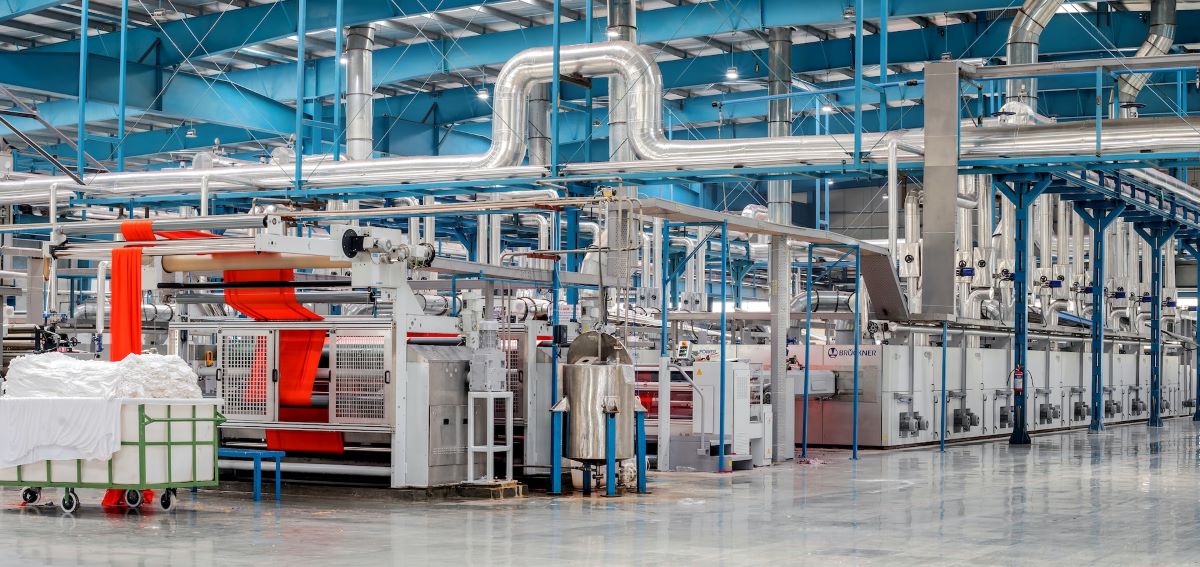
The Top 6 Key Performance Indicators for Manufacturing
There are many Key Performance Indicators (KPIs) that manufacturing businesses can use to assess operations and achieve peak performance.
It’s important to point out that KPIs are tightly connected to your business goals, and you should choose KPIs that allow you to measure the effectiveness of your overall strategy accurately. Chortek offers the business and accounting resources manufacturers need to evaluate and improve upon those indicators.
Here are 6 key performance indicators that manufacturers should consider regularly measuring to drive smart decision-making and strategic planning.
1. Overall equipment effectiveness
Overall Equipment Effectiveness = Availability x Performance x Quality
Time management, resource availability, talent quality, lack of strategy, and so much more can impede productivity. That’s why Overall Equipment Effectiveness, or OEE, exists for manufacturing.
OEE provides a high-level understanding of the percentage of manufacturing time and energy that is genuinely productive based on three primary factors:
- Availability: The ratio of run time to planned production time.
- Performance: Accounts for anything that slows the production process.
- Quality: Represents malfunctioning equipment and parts that fall short of quality standards.
OEE is the best metric for helping manufacturers identify losses, track progress, and eliminate low-performing equipment. It’s the gold standard of peak manufacturing productivity.
Manufacturers can use this broader metric as a jumping-off point to identify issues and then dive deeper into specific solutions.
2. Production cycle time and on-time delivery
These two KPIs are integral to helping you identify bottlenecks within your organization.
On-time delivery
On-Time Delivery = (Orders Shipped on Time / Total Orders) * 100
It’s important to remove any grey areas from this calculation. An “order shipped on time” includes any order shipped before or on the defined shipping date. If half the order is shipped before and half after, the whole order is considered late.
In manufacturing, there are lots of layers to what ends up affecting On-Time Delivery, and this KPI is essential to helping you determine what is and isn’t working.
For example, if product x takes six days to produce, but the engineering team doesn’t release it to production until three days before it’s scheduled to ship. Is it a production issue? An engineering issue? Or an estimating issue?
The On-Time Delivery KPI doesn’t necessarily give you the answer, but it gives you a good indicator of the overall health of your organization’s processes.
Production cycle time
Production Cycle Time = Non-Productive Hours + Productive Hours (Per Product)
Cycle time measures the overall production timeline. It identifies the time spent completing each part of a finished product, the production capacity of employees, and the number of daily hours available to allocate.
Once you have a good benchmark for each product, you can track how consistent you are and identify triggers that knock you off track. It also helps you clearly set expectations for customers by communicating accurate and realistic product development timelines.
3. Defect rate
Defect Rate = (Defects / Output Tests) x 100
The defect rate KPI is used to track how often units fail quality testing. It shows the margin between defective parts and products and those that pass quality standards.
It’s a good idea to know what your target defect rate is. For short production runs, the calculation can be used to compare defect rates between different runs. This is valuable when trying out a new supplier, piece of machinery, or process.
For longer production runs, the calculation can be used at regular intervals to monitor the machinery’s performance throughout the run.
It’s an important quality control check that helps manufacturers explore and resolve defects before they get out of hand.
4. Inventory turnover ratio
Inventory Turnover = COGS / Average Value of Inventory
*COGS = Cost of Goods Sold
The inventory turnover ratio indicates sales effectiveness, finance management, and quality and quantity control. It shows how many times a business turned over its inventory relative to its cost of goods sold.
There’s a delicate balance around inventory.
On one side, you want a regular inventory flow to satisfy customer demand, avoid bottlenecks, and stay on track with business sales goals. On the other hand, inefficient inventory management can lead to rapidly depleted stock or excess leftover stock.
The inventory turnover ratio KPI essentially measures business and sales performance during an accounting period.
A successful product moves quickly, resulting in regular high turnover and regular replacement with no excess leftovers. On the opposite end of the spectrum, high inventory and slow sales may indicate some problems.
This measurement accounts for raw goods, finished products, and in-progress orders. You can use it to optimize your purchasing strategy, identify issues in production timelines, and adjust financial allocations.
5. Revenue growth and gross margin growth
Revenue and gross margin growth are two common and closely linked KPIs for businesses, especially manufacturers. They’re essential metrics to track, but they exist more to optimize business practices than production performance that other KPIs track.
Revenue Growth
Revenue Growth = (Current Period Revenue – Previous Period Revenue) / Previous Period Revenue
For revenue growth, you’re tracking the ebb and flow of sales. How much is coming in, when it’s high or low, what is or isn’t selling? This metric also helps businesses identify expansion opportunities or what products are causing a dip in revenue.
Gross Margin Growth
Gross Margin Growth = Total Revenue – COGS
*COGS = Cost of Goods Sold
Hand in hand with revenue is gross margin growth. In other words, it’s how much take-home profit you make from manufactured product sales after taking care of raw materials and labor. This is an important metric to understand how much is available to invest in growing your business.
Neither are performance indicators of actual manufacturing processes or the nuts and bolts of the actual production. Revenue growth and gross margin growth indicators serve to point out gaps in marketing and sales. It may lead to discovering problems like poor quality, but it’s a bigger-picture metric.
6. EBITDA growth
EBITDA Growth = (Current Period EBITDA – Prior Period EBITDA) / Prior Period EBITDA
EBITDA growth, also known as earnings before interest, taxes, depreciation, and amortization growth, is a financial metric that measures the increase in a business’ operating profitability over a specific period. It looks at the core profitability and cash flow generation of a business minus the impact of financing decisions, accounting practices, and non-operating items.
EBITDA provides a good assessment of a business’s financial health. And EBITDA growth has emerged as a key factor considered by investors, lenders, and potential business partners in evaluating the attractiveness of a manufacturing company.
A consistent and positive EBITDA growth demonstrates the business’ ability to generate sustainable profits. Lenders use this metric to determine if a business has the ability to service its debt obligations. And many investors use it to compare the attractiveness of two businesses in the same industry as an objective measurement of value.
It’s a good idea to know what your EBITDA growth looks like year over year and see how you stack up next to other manufacturers’ reported EBITDA. Especially if you are looking to sell or pursue a loan in the near future.
Conclusion
In short, these KPIs help you keep an eagle eye on the happenings of your business.
They serve as essential compasses for manufacturers, guiding them toward operational excellence. They allow companies to pinpoint inefficiencies and make targeted improvements.
Harnessing these KPIs empowers manufacturers to stay competitive and adapt in a rapidly changing industry.
Discover how Chortek helps manufacturers build better, stronger businesses.
Recommended reading



